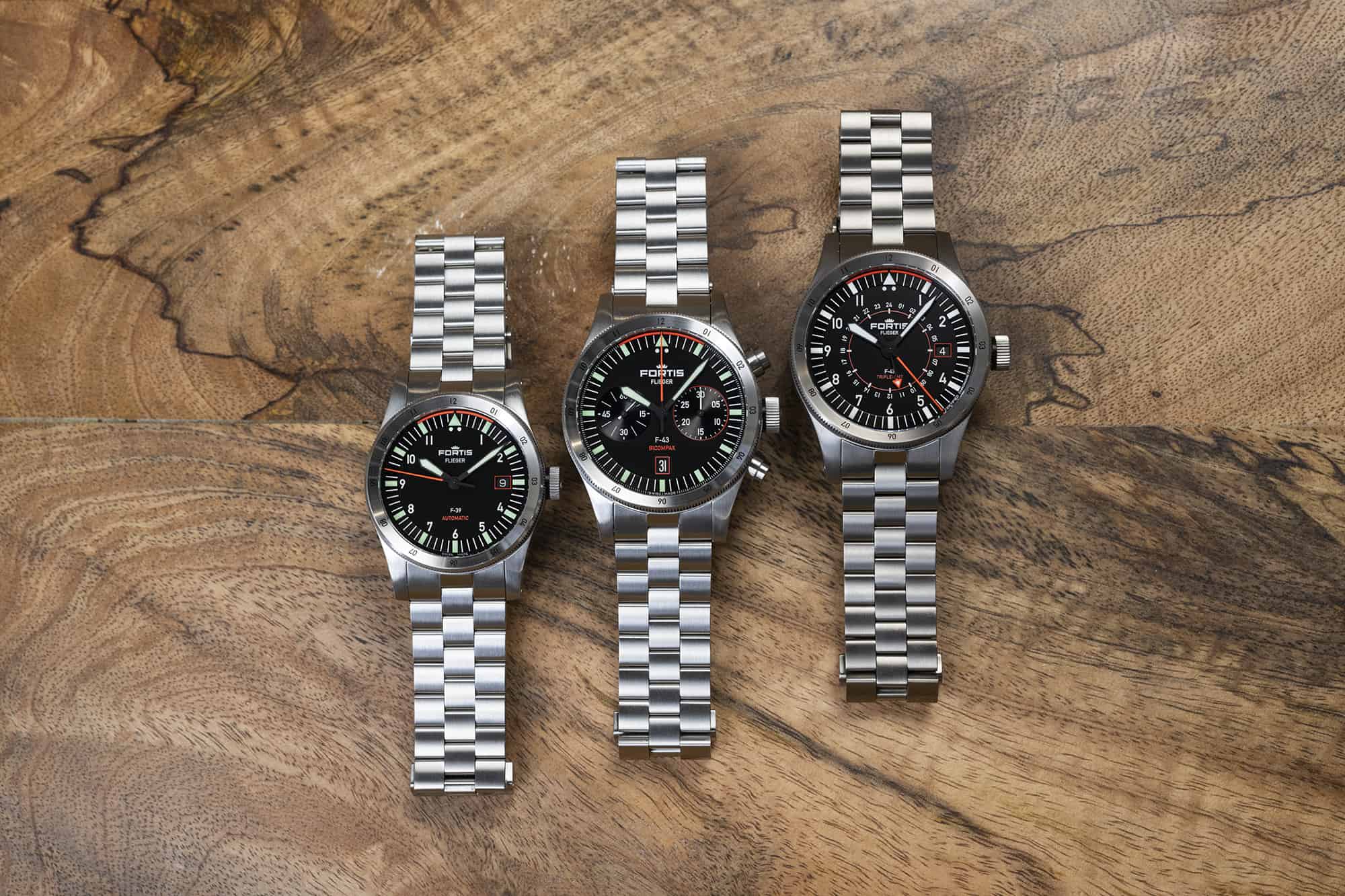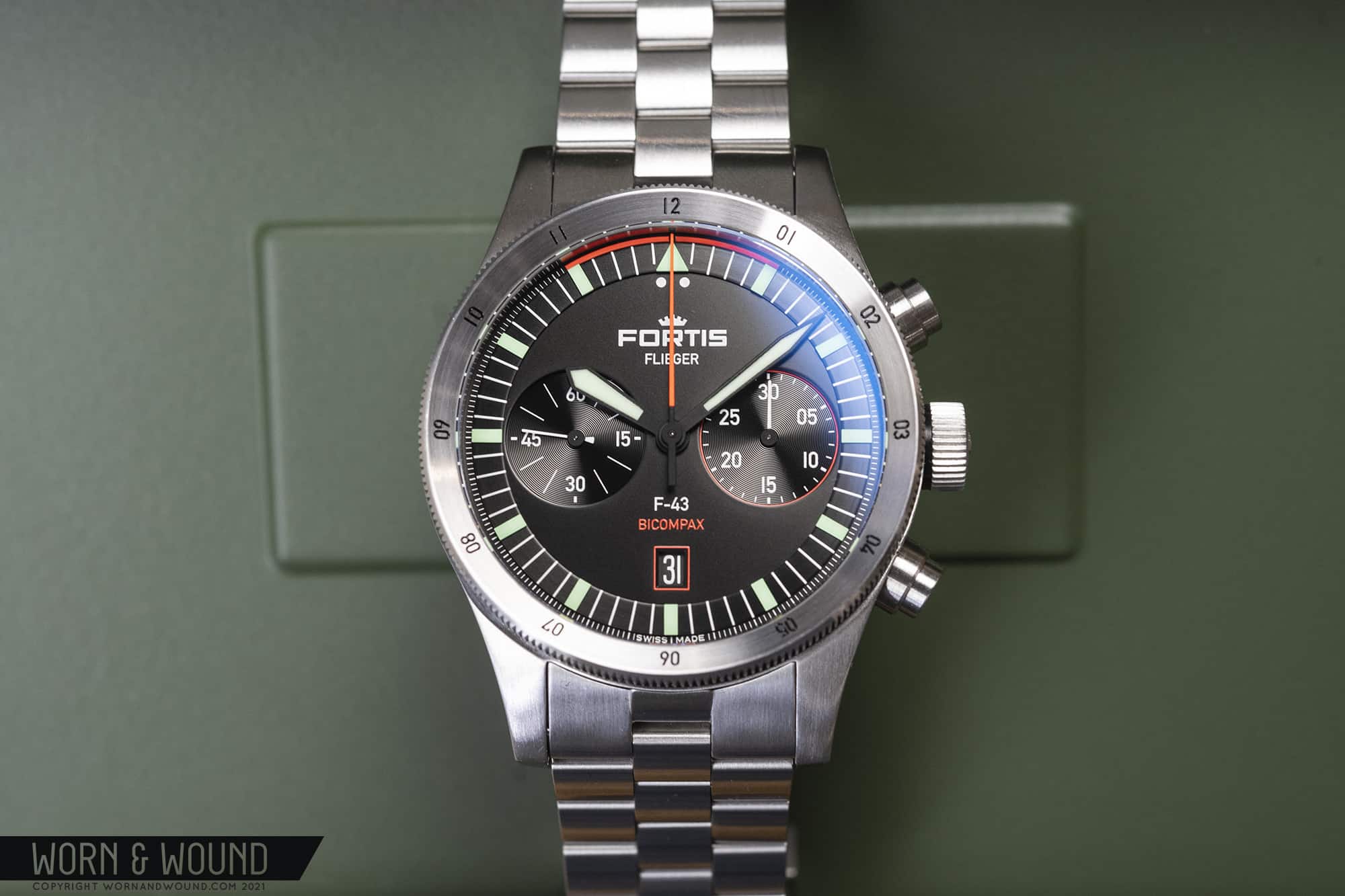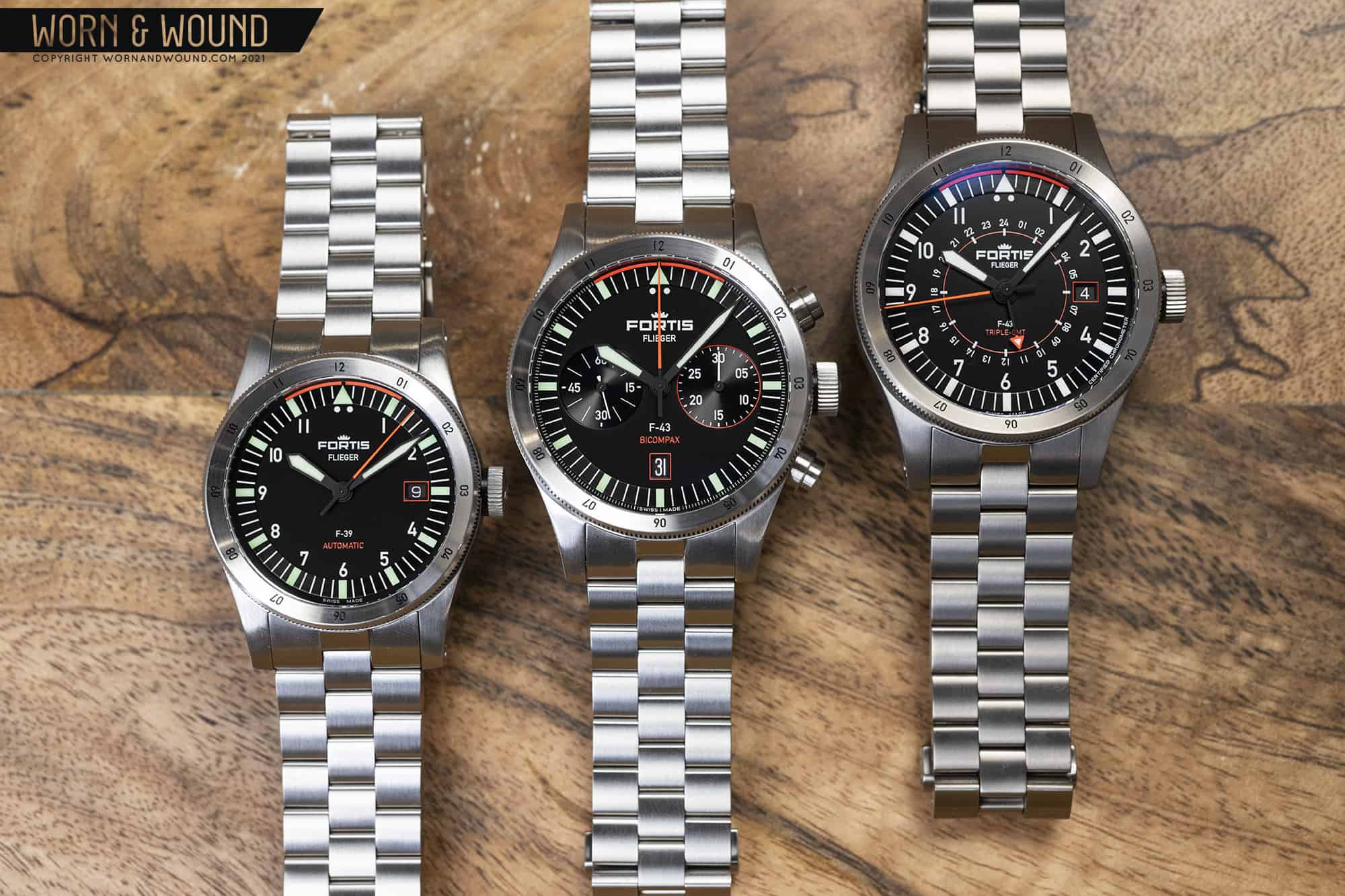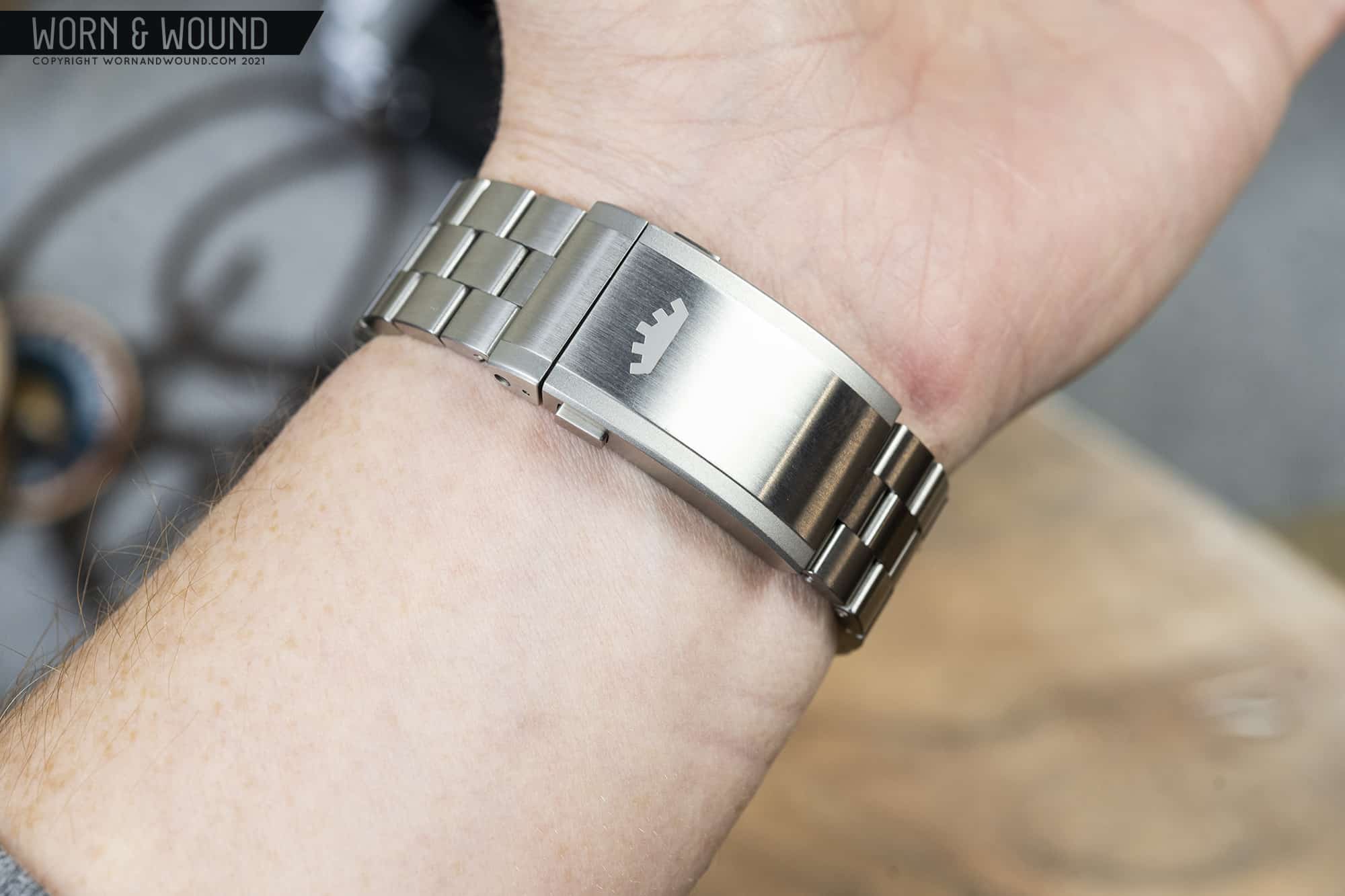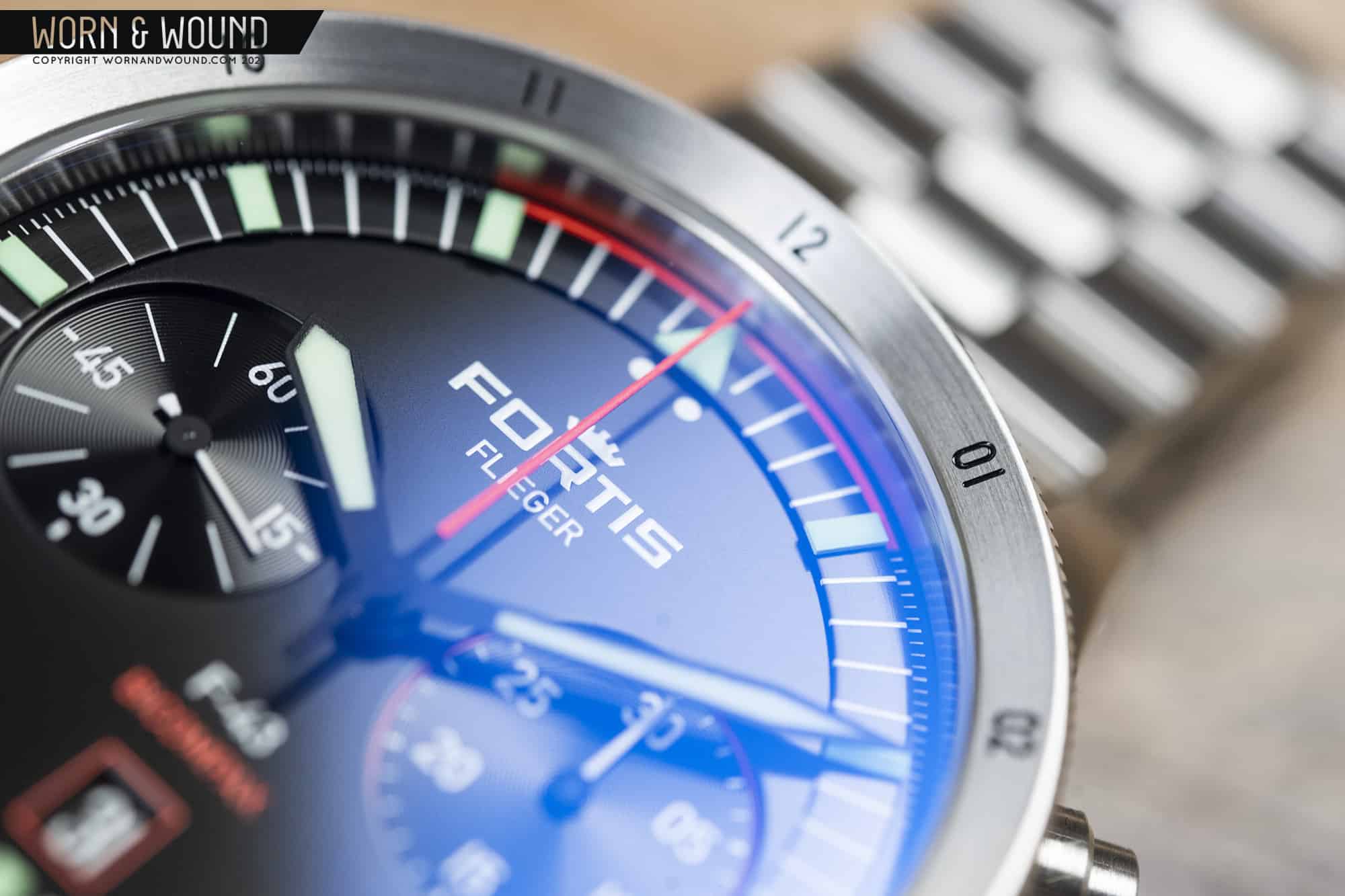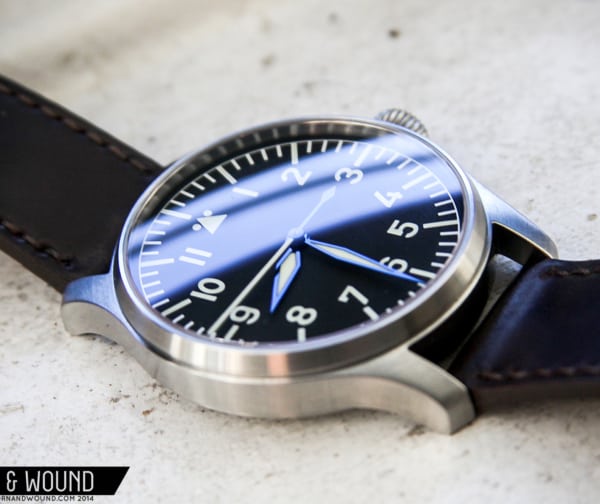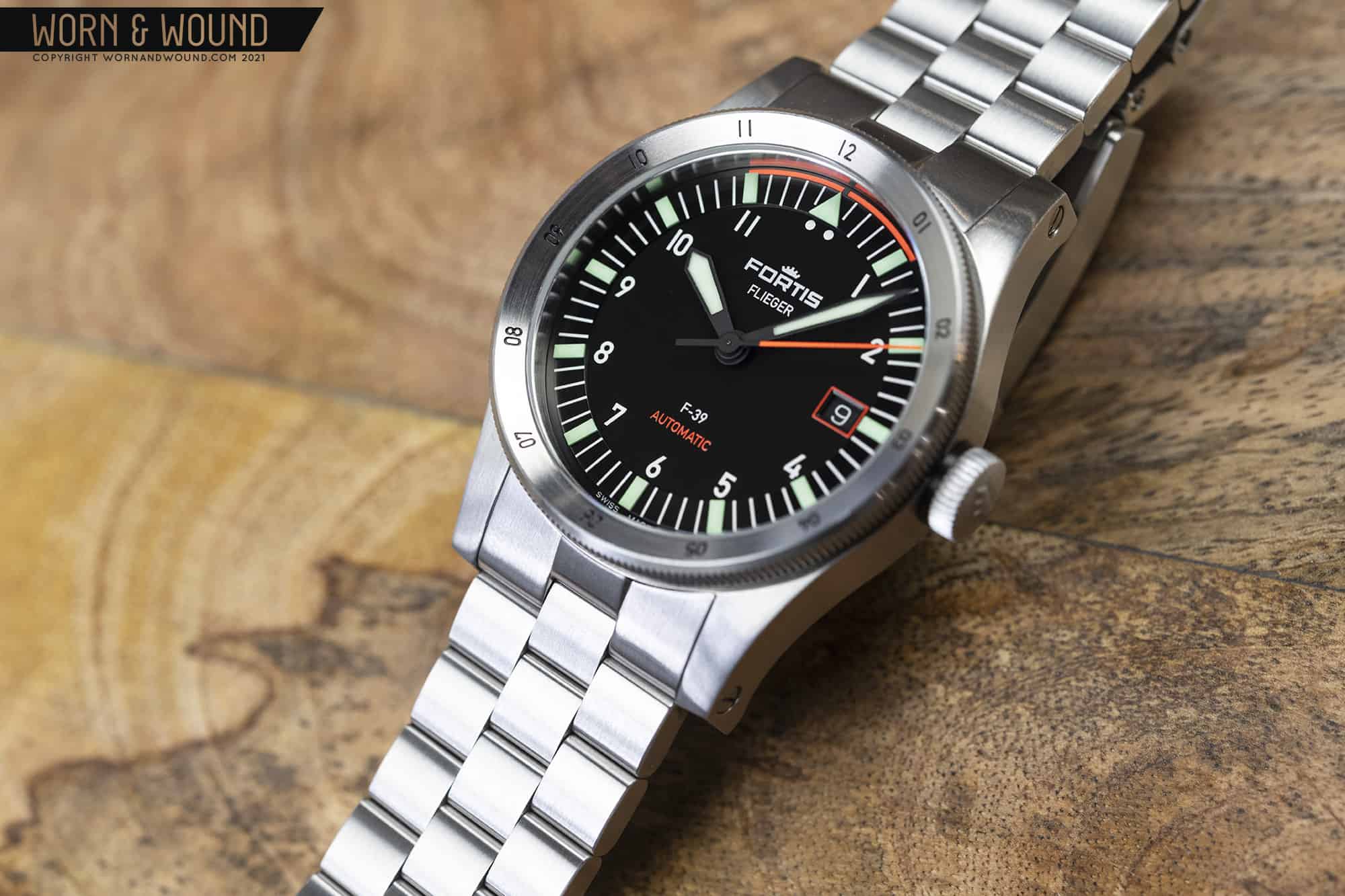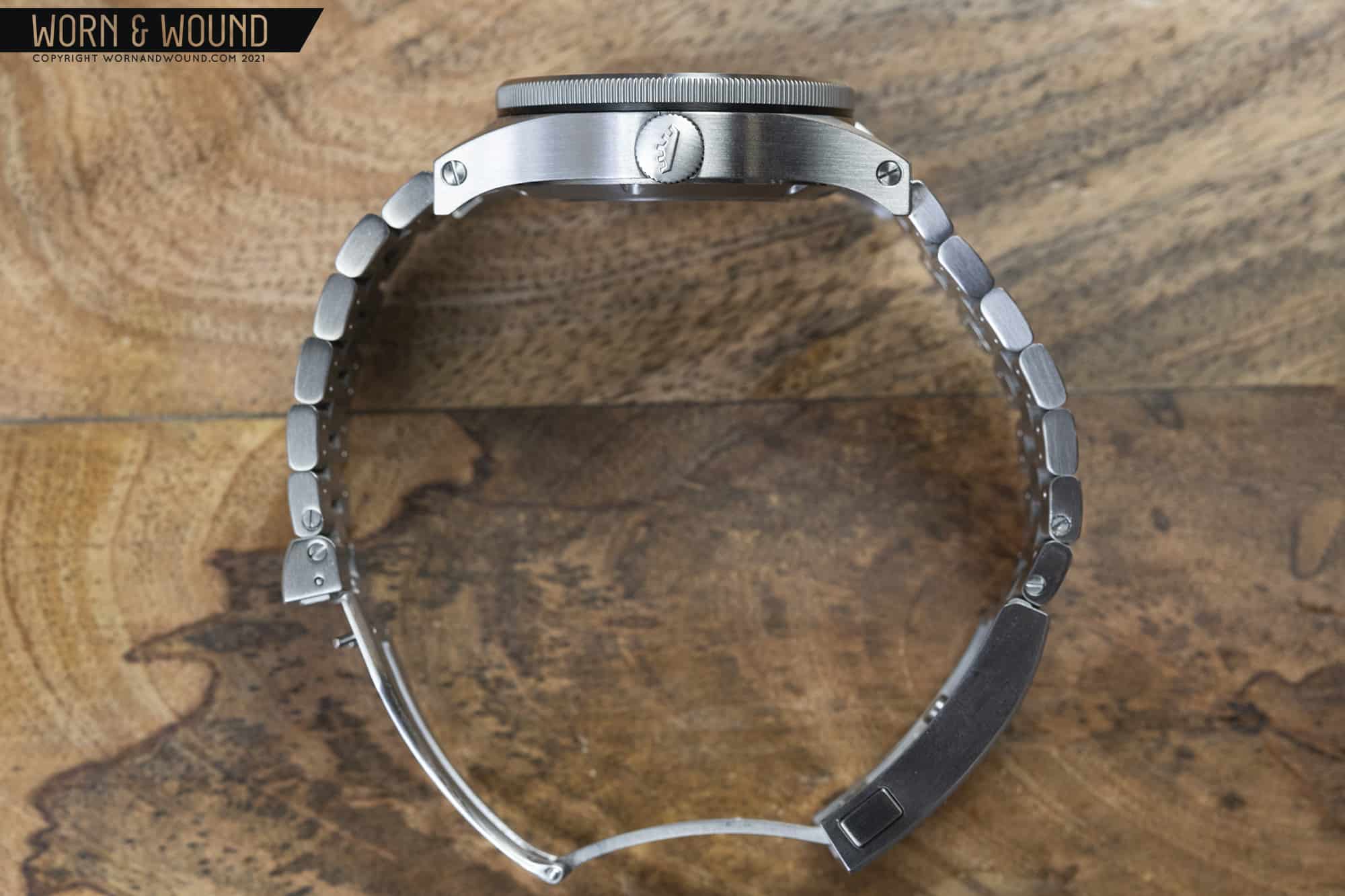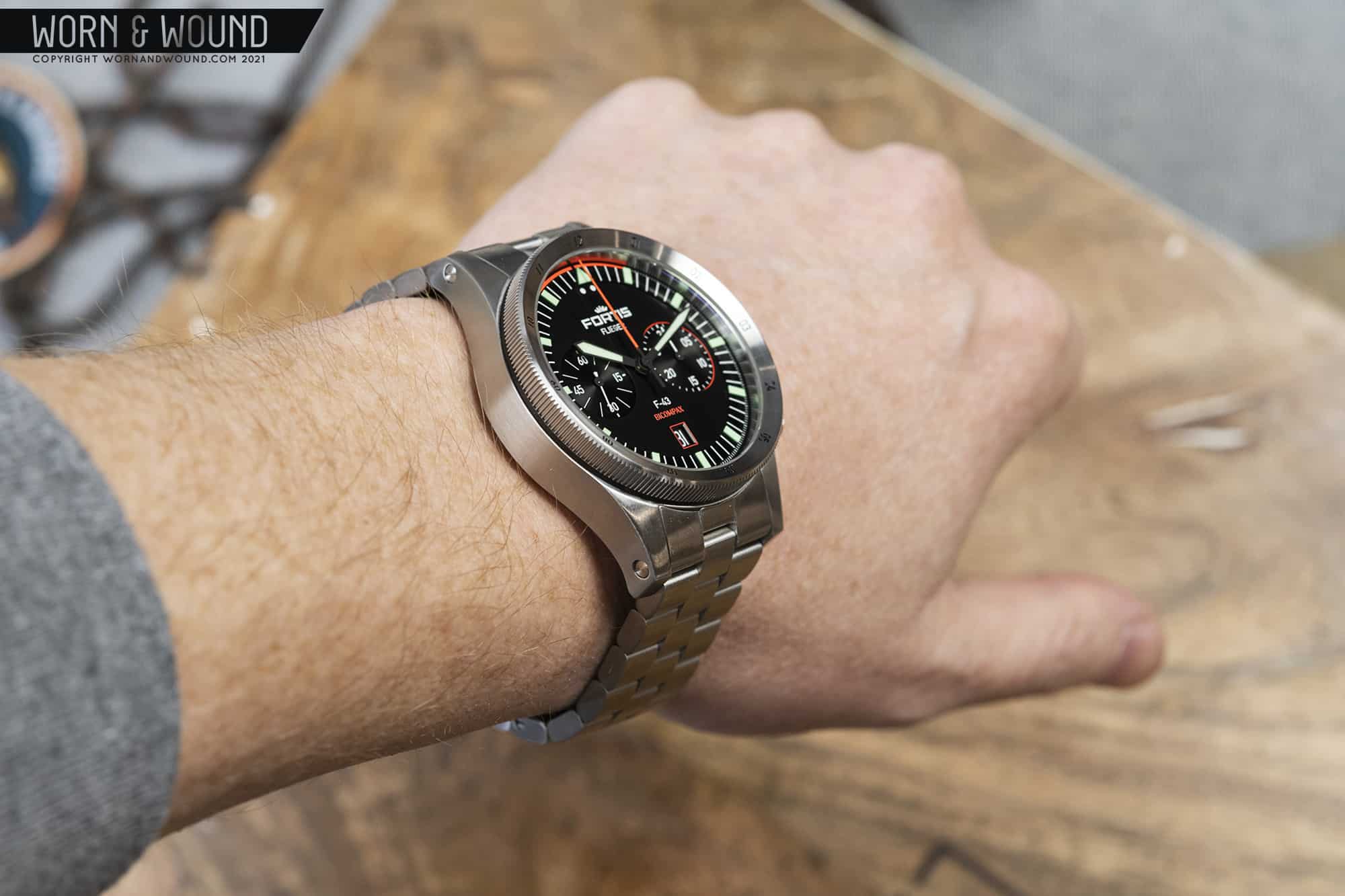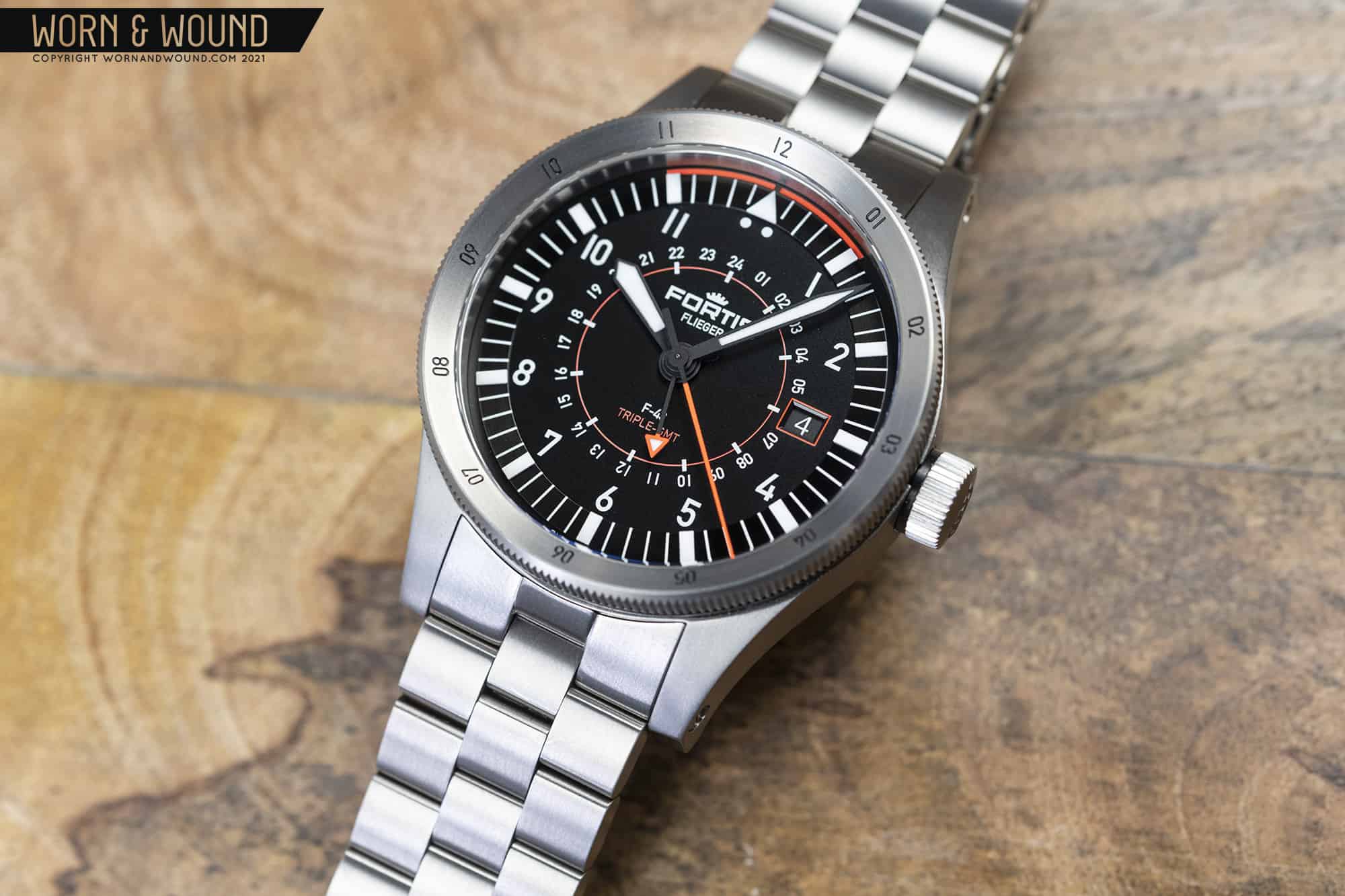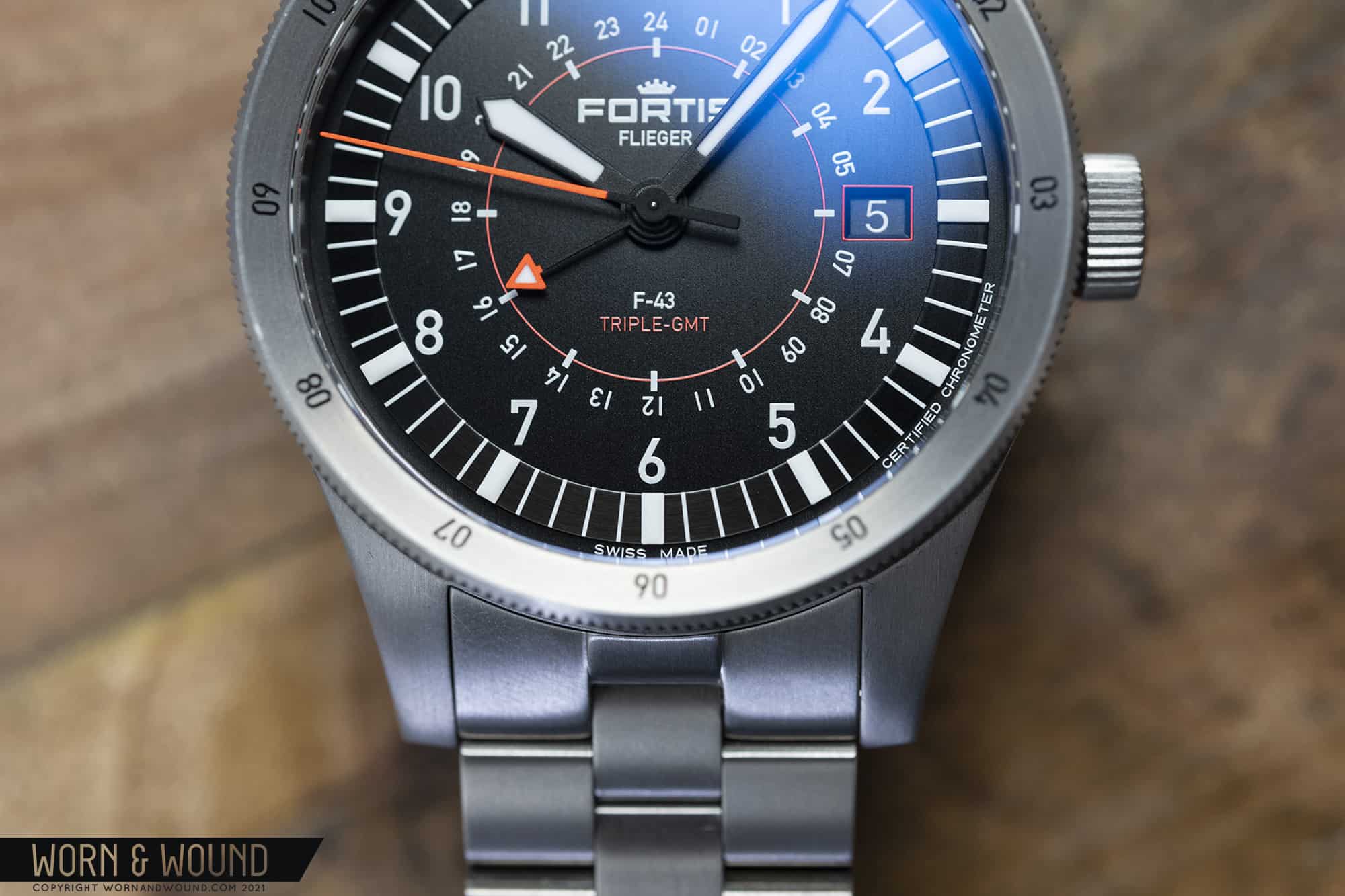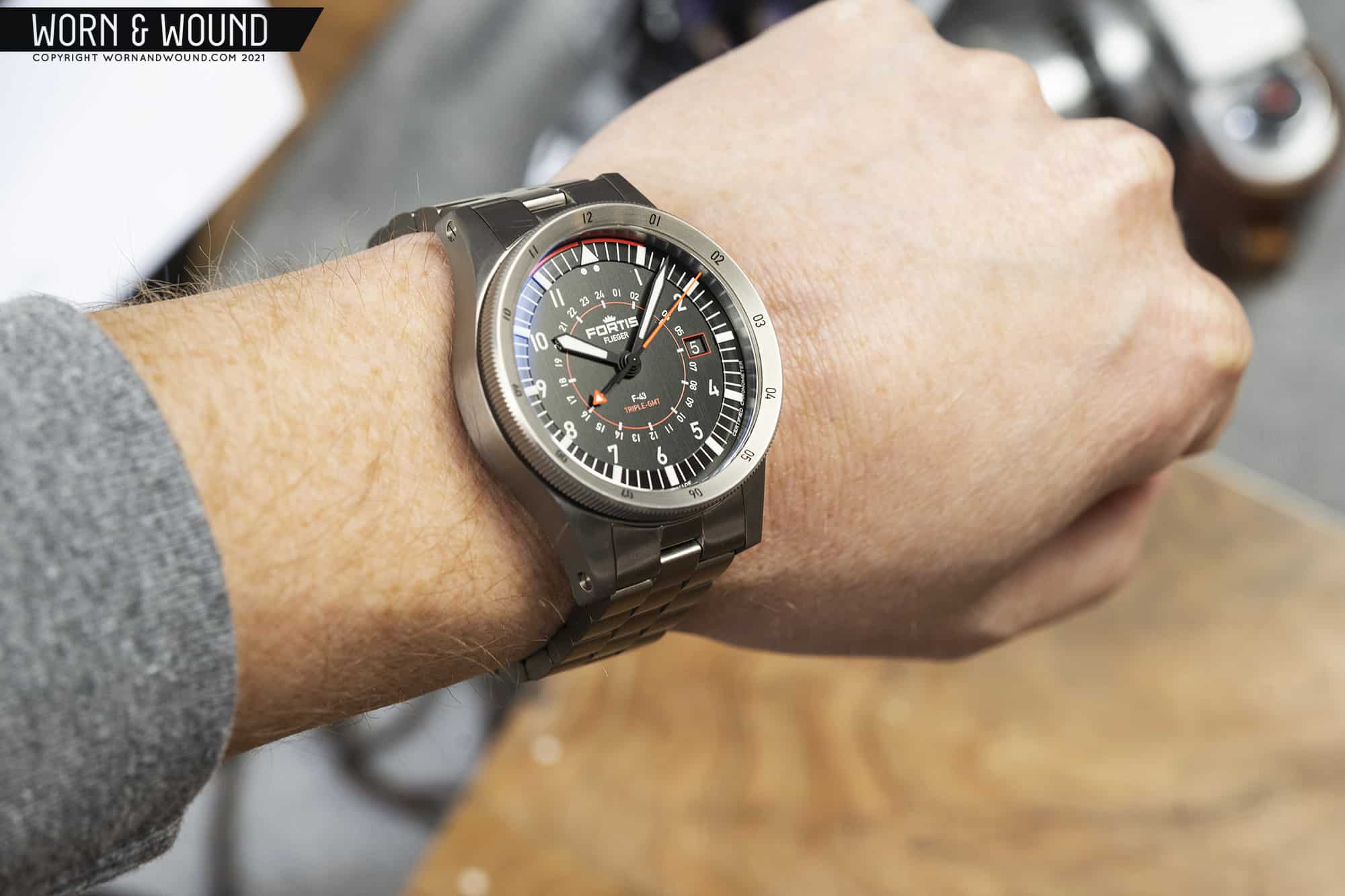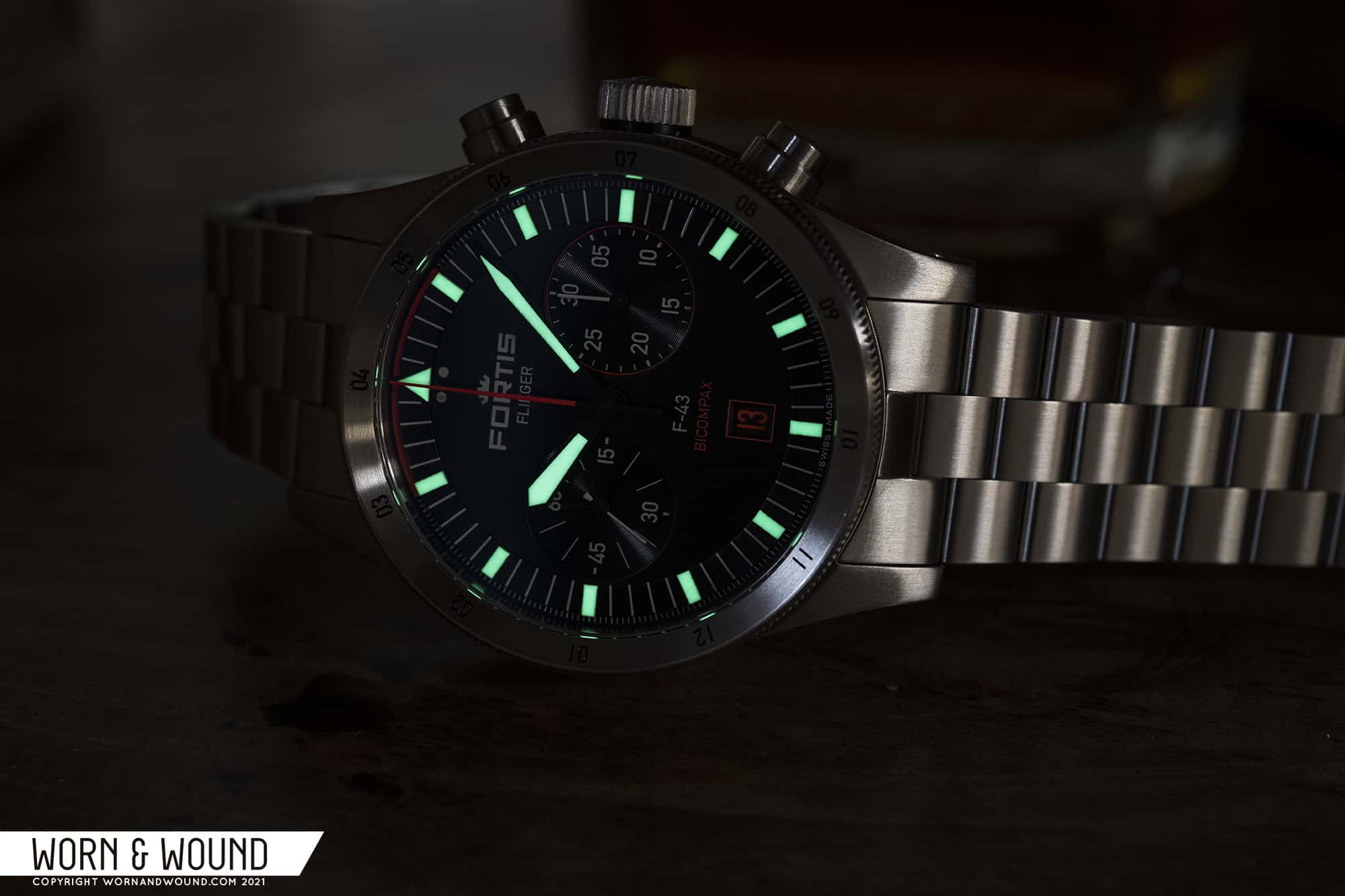Fortis hit the reset button on their Flieger family with three new watches that look to set a new tone for the brand as a whole. The 3 watches, which were staggered in their releases last year, include a chronograph, time and date models, and culminated with reveal of the F-43 Triple GMT. These watches feel every bit the tools that they are both in hand and on wrist, and with a few unexpected details worked in along the way, there’s no shortage of that Fortis character we know and love.
The new Flieger watches range in size, from 39mm to 43mm, yet each could charitably be described as physically imposing. From the lug structure to the design on the bezel, there’s not much in the way of subtlety to be found here. Instead, each feel like precision instruments, machined like a bolt action rifle with nothing but business in mind. These watches serve as an admission that watches need to be seen as tools built for a specific function, and built as robustly as possible around fulfilling that function. If you view watches in this manner, you’ll find a lot to love here.









 Featured Videos
Featured Videos




